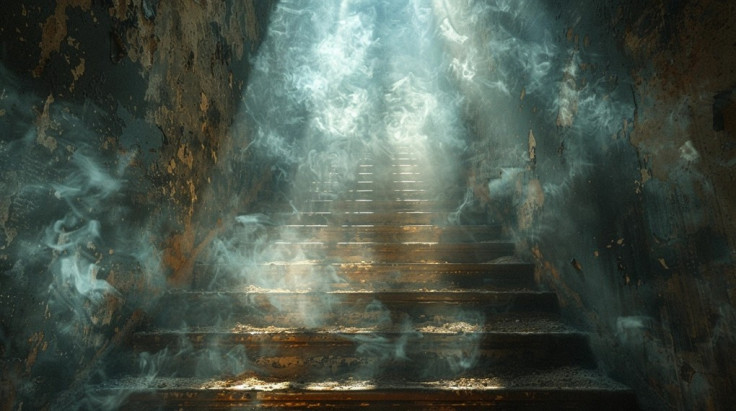Air Quality Expert Steve Fontaine on the Impact of Wildfire Smoke on Indoor Air Quality and Health

Wildfires have become a growing concern worldwide, releasing massive amounts of smoke and particulate matter into the air. While outdoor air quality is immediately impacted, indoor air quality (IAQ) also suffers significantly as fine particles infiltrate homes, schools, and workplaces. Wildfire smoke contains harmful pollutants such as PM2.5, carbon monoxide (CO), volatile organic compounds (VOCs), and hazardous air toxics, all of which pose serious health risks.
According to Steve Fontaine, America's indoor air quality expert and founder of IAQ Solutions and Consulting Inc., "Wildfire smoke doesn't just affect the outdoors—it seeps into our homes and buildings, putting everyone at risk. The right IAQ strategies can help protect your health and well-being."
Health Risks of Wildfire Smoke Exposure
Wildfire smoke poses significant health risks, ranging from immediate respiratory issues to long-term cardiovascular and cognitive effects. Vulnerable populations—including children, older adults, and individuals with preexisting conditions—are particularly susceptible to its impacts.
Short-term exposure often results in coughing, wheezing, asthma exacerbations, and lung inflammation due to fine particulate matter (PM2.5), which penetrates deep into the lungs. Additionally, wildfire smoke is linked to cardiovascular complications such as heart attacks, strokes, and heightened blood pressure.
Volatile organic compounds (VOCs) and other pollutants irritate the eyes, nose, and throat, while prolonged exposure may accelerate cognitive decline and increase the risk of dementia. Studies have also shown a spike in hospitalizations for respiratory and cardiac issues during wildfire events.
How Wildfire Smoke Impacts Indoor Air Quality
Even with closed windows and doors, wildfire smoke infiltrates indoor spaces through small gaps, ventilation systems, and structural openings. The primary culprits are fine particulate matter (PM2.5 and PM10), which can enter the bloodstream and trigger systemic inflammation. Carbon monoxide (CO) levels may rise indoors during wildfires, causing symptoms like headaches and dizziness; in severe cases, CO poisoning becomes a risk.
VOCs released from burning vegetation and synthetic materials exacerbate neurological and respiratory symptoms. Furthermore, wildfire smoke can interact with sunlight and other pollutants to elevate indoor ozone levels, which damage lung tissue.
Strategies to Protect Indoor Air Quality During Wildfires
To mitigate the effects of wildfire smoke indoors, individuals should adopt proactive measures. High-efficiency particulate air (HEPA) purifiers are effective in removing 99.97% of airborne pollutants, including PM2.5 and VOCs. Upgrading HVAC systems with MERV-13 or higher-rated filters helps trap fine particles before they circulate indoors.
Sealing gaps around windows and doors minimizes smoke infiltration, while switching HVAC systems to recirculate mode prevents outdoor air from entering. Smart indoor air quality monitors can detect spikes in pollutants like PM2.5 and CO, enabling timely interventions such as activating purifiers or adjusting ventilation settings.
For communities frequently affected by wildfires, professional indoor air quality services offer tailored solutions such as advanced filtration systems, real-time monitoring devices, and building envelope evaluations to seal entry points for smoke. These measures not only improve air quality but also protect occupants from the severe health risks associated with wildfire smoke exposure.
A study published in Atmospheric Environment found that homes equipped with enhanced IAQ measures had 60% lower indoor PM2.5 concentrations during wildfire events compared to homes without air filtration interventions.
Steve Fontaine stresses, "Preparation is key. The difference between clean and polluted indoor air during a wildfire often comes down to proactive air quality management."
Conclusion
Wildfire smoke is a serious threat to indoor air quality (IAQ) and public health. Implementing the right strategies—such as using HEPA air purifiers, upgrading HVAC systems, and consulting with indoor air quality services—can significantly reduce smoke-related health risks. By taking proactive steps, individuals and businesses can create safer indoor environments during wildfire events.
As Steve Fontaine emphasizes, "Clean air is not a luxury—it's a necessity, especially in wildfire-prone regions. Investing in proper IAQ solutions today can protect lives tomorrow."
© Copyright IBTimes 2024. All rights reserved.





















